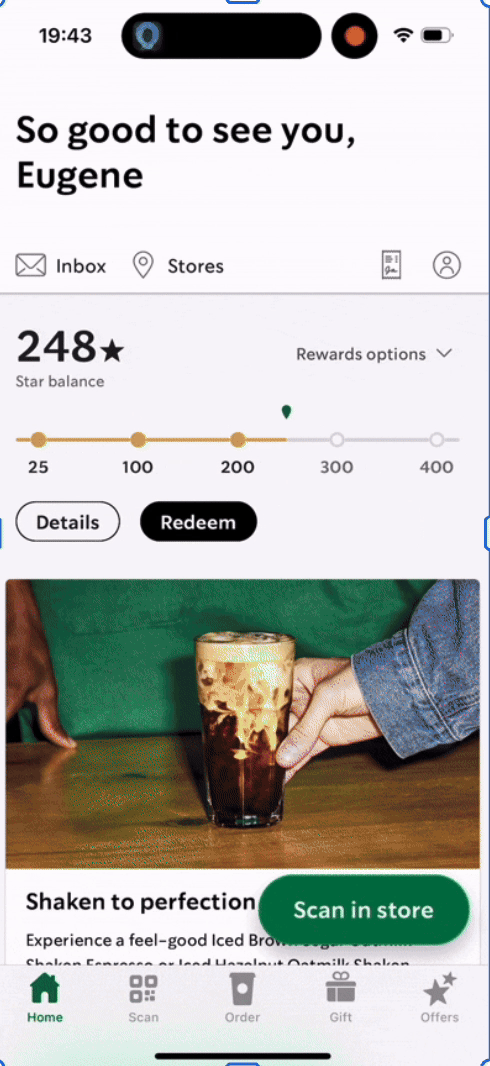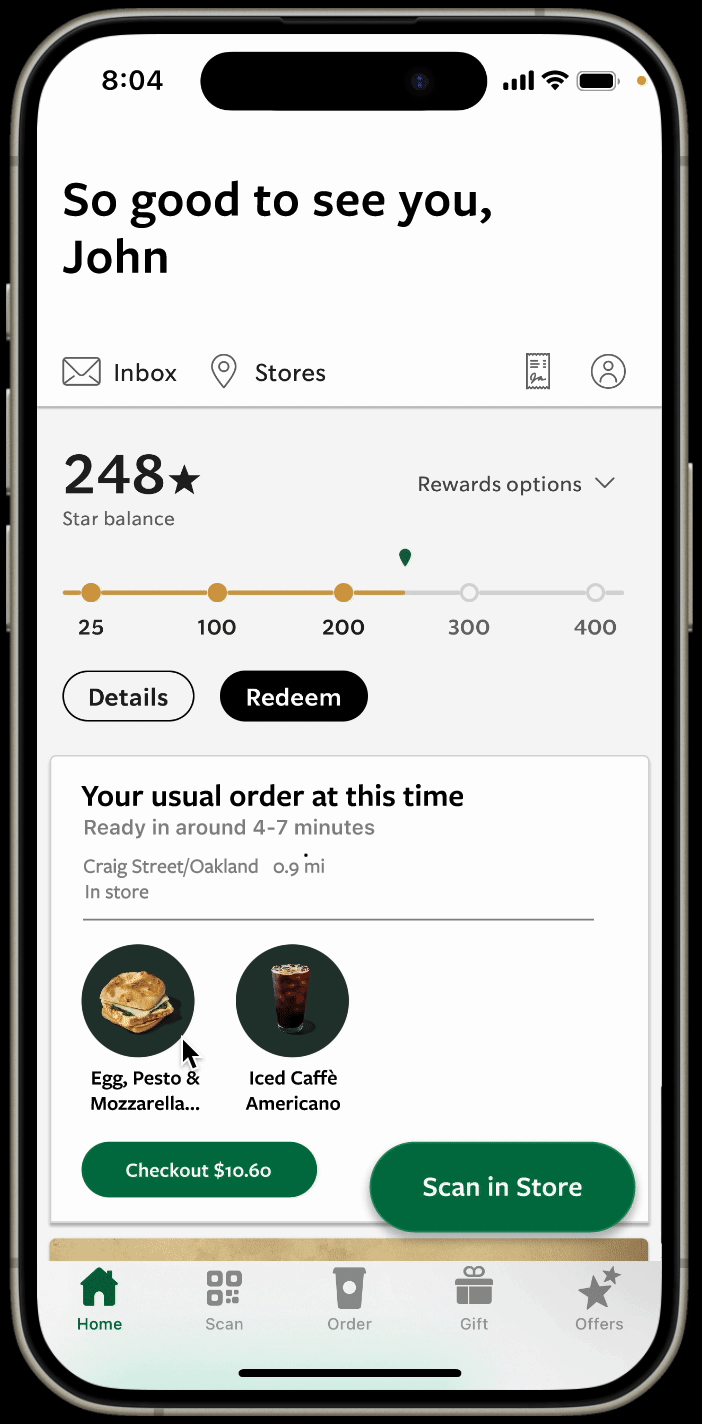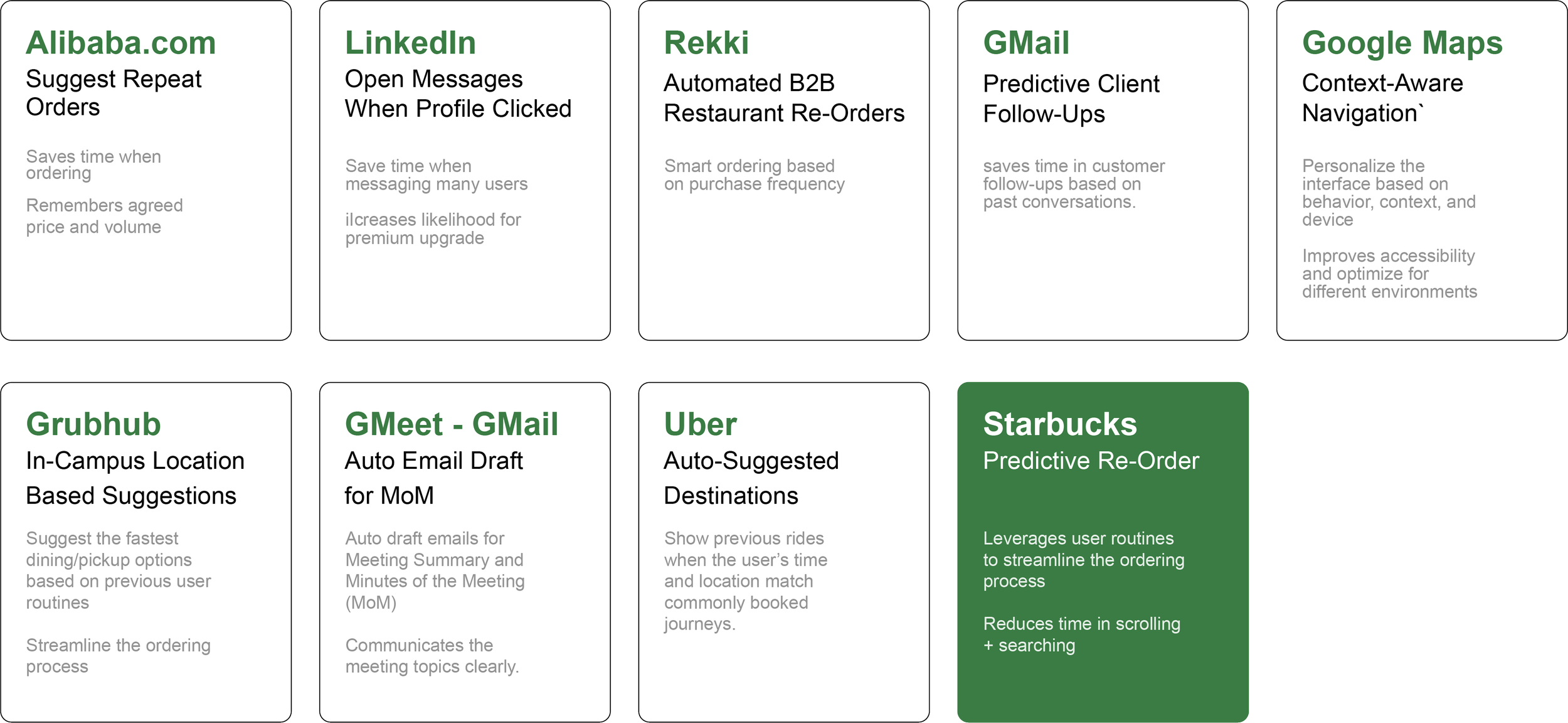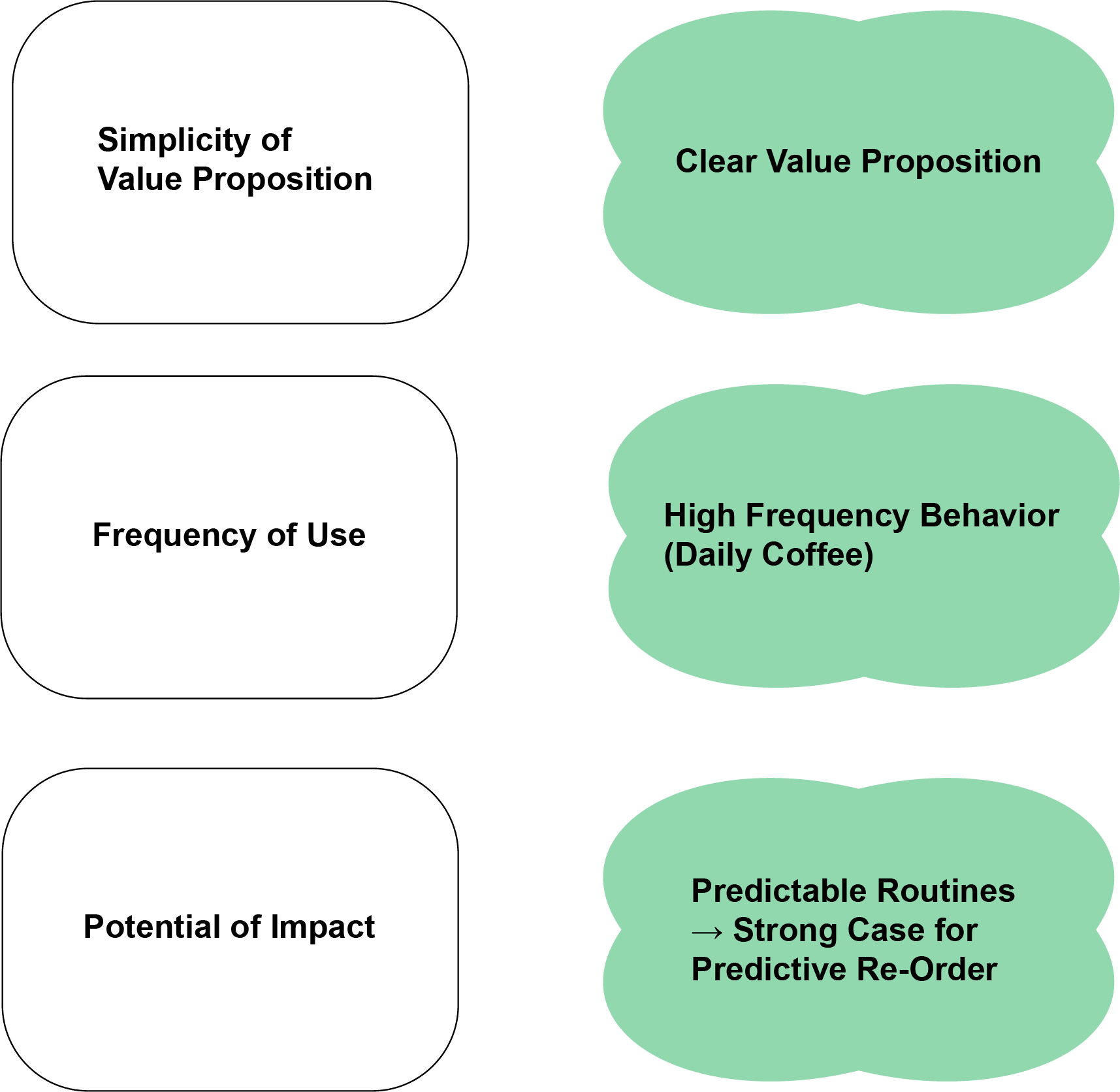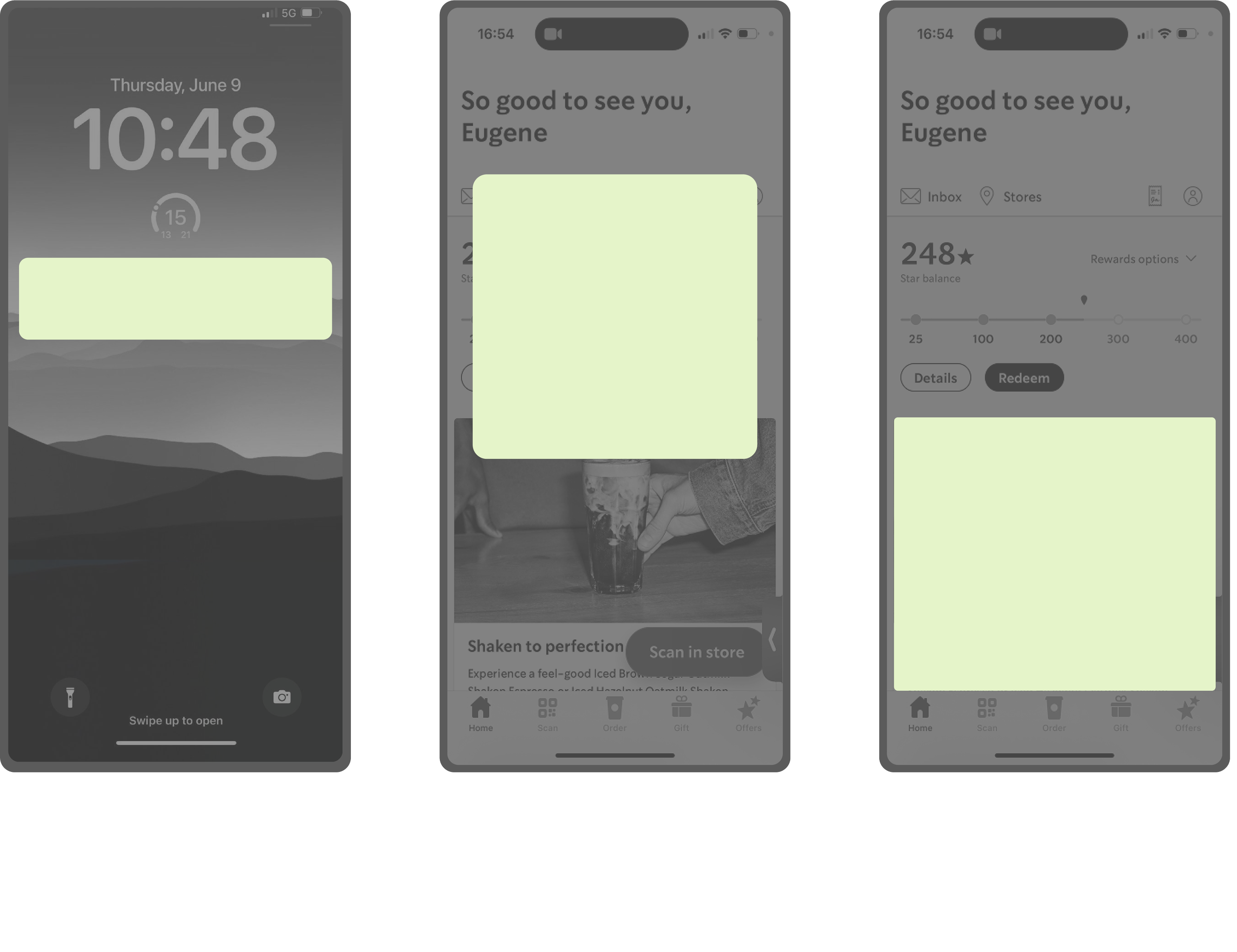Starbucks Smart Re-Order AUI
Skip the Steps, Savor the Sips
case study • 5 min read
An Adaptive User Interface (AUI) that learns from customer routines to streamline the Starbucks mobile ordering flow.
With one tap, frequent users can instantly reorder their favorites to save time and reduce friction during busy routines.
The Problem
Re-Ordering is Too Rigid
The Starbucks app requires 16+ taps to reorder a regular drink. This repetitive, one-size-fits-all flow creates unnecessary friction, especially for customers with consistent daily habits.
The app doesn’t adapt to time, location, or context, and fails to anticipate user needs
I wondered: How might we reduce interaction cost for frequent users without disrupting occasional ones?
Research + Opportunity, Problem Definition,
Process
Ideation, Prototyping + Interaction, Usability Testing
Lead UX/ UI Designer
My Role
Figma
Tools
3 weeks
Duration
Jan-Feb 2025
The Solution
Smart Predictive Re-Order
Starbucks UI
Our UI
Detects patterns in order frequency (ex: “Grande Iced Americano, 8 AM, Main Street Starbucks”)
Surfaces a Re-Order button at the right time and place.
With one tap, users skip redundant steps and head straight to checkout.
Anticipate intent, but never override choice.
Table of Contents
01 Research
Every Minute Counts: 16 Taps for Daily Coffee
Narrowing Down: Why Starbucks?
While many ideas showed promise, we prioritized solutions that could demonstrate clear and immediate value to users.
Starbucks emerged as the strongest candidate: a high-frequency use case, a simple and relatable flow, and clear room for impact.
Scan and Evaluation
We conducted AUI opportunity scans across apps like LinkedIn, Grubhub, Uber, and Gmail.
We then evaluated each concept against criteria: simplicity of value proposition, frequency of use, and potential for impact.
Literature Review
After selecting Starbucks as our focus, we grounded this decision with a literature review.
We found insights on mobile app loyalty and routine usage, strong pattern consistency in user orders, and surges in mobile ordering during commute and peak hours.
Yet, despite these routines, the Starbucks app requires 16+ taps to reorder a favorite drink.
For time-pressed commuters, this repetitive friction adds unnecessary effort to an otherwise habitual act.
02 Synthesis
Humanizing the Data:
Designing for the Everyday Commuter
Defining the Problem
To humanize our research data, we developed a persona.
We primarily focused on the issue of cognitive fatigue in what should be a habitual + effortless action.
Synthesis Insight
Sara’s biggest frustration is time lost navigating the same digital path each day.
Problem Statement
Sara, a working parent who commutes daily between school drop-offs, the office, and errands.
Balancing User Needs + Business Value
By reframing this insight through both user and business lenses, we identified mutual goals.
How might we help consistent Starbucks customers quickly reorder their favorites without forcing them through redundant flows?
we identified that Starbucks plays a ritualistic role in her morning routine: a brief + dependable moment of consistency before the day begins.
Despite her loyalty to the brand and the app, Sara often experiences unnecessary friction in the mobile ordering process. Each morning, she repeats the same series of steps: reopening the app, locating her favorite order, confirming details, and waiting for confirmation.
03 Ideation
One Tap, Big Impact
Design Directions
With the problem defined, we explored multiple design directions for the how and where to introduce a predictive reorder feature within Starbucks’ existing interface.
We evaluated each concept across three variables: intrusiveness, speed, and clarity.
Narrowing Down:
Why the Predictive Home-Screen Cards?
The home-screen predictive reorder card emerged as the best balance. It is intuitive but not intrusive.
It adapts based on time, day, and location and surfaces a “reorder” card when the system detects consistent behavior. Users will be able to remain in control by being able to scroll away to reinforce trust while reducing friction.
04 Design: Lo-Fi - Hi-Fi
From Sketches to Seamless Flow
Lo-Fi Prototype
I hand-drew wireframes to both analyze Starbucks’ existing reorder flow and identify redundant interactions (top) and explore how to add our predictive reorder card (bottom).
The goal for the current app analysis was to visualize how many steps a user currently takes to complete a routine reorder and identify specific pain points. For our redesign, we focused on reducing scroll depth, maintaining layout familiarity, and ensuring the new element felt native to the existing Starbucks UI.
Key Considerations
Maintain visual consistency with Starbucks’ established hierarchy (typography, spacing, button shapes)
Keep content concise but informative (item names, pickup store, “Quick Order” button)
Ensure the predictive element remains visible but optional, (let users scroll past as easily as other banner cards)
Balance text visibility and image size for quick scannability

